What attract insects (rose slugs, aphids, mites) to plants?
strawchicago z5
9 years ago
Featured Answer
Sort by:Oldest
Comments (22)
jim1961 / Central Pennsylvania / Zone 6
9 years agolast modified: 9 years agostrawchicago z5
9 years agolast modified: 9 years agoRelated Discussions
Attracting beneficial insects
Comments (17)I've grown large numbers of peppers, both sweet and hot for years both indoors, in a greenhouse, and outside. Hot peppers are a passion, so I am continually starting new seedlings, and removing older plants. I've never used pesticides in any of my plantings, but have been tempted to on occasion. Generally once or twice a year I get a very heavy bloom of aphids on the peppers and several other plants I grow (especially the roses). For about a week the plants look terrible, covered with the aphids, some leaves falling, and honeydew dripping on the soil. Then the beneficial insects I introduced just one time come up to speed, and control the aphids. It is really amazing to see how quickly they cut the number of aphids, and what a thorough job they do. I have introduced parasitic wasps, green lacewings, and ladybugs. While all seem to maintain some presence in the plantings, it is the parasitic wasps that seem to do almost all the work. I plant a few plants to feed the beneficial insects some pollen, and provide shelter. My best plantings for this purpose are fennel, dill, alyssum, and cilantro. Since I can eat most of these plantings as well, they are not too much of a problem to maintain. Since it is the flowers that provide the most benefit, I allow all to flower freely; they all readily reseed in pots. I introduced the beneficial insects mostly about 16 years ago. Some other beneficial insects have joined the group over the years, particularly syrphid flies, some true bugs, and some predatory beetles. Together, these critters control all my bug issues. I have rarely lost a plant, and I grow quite a few hundred a year. It takes very few extra plants to keep the beneficials happy and fed. By the way, I find that the beneficials mostly stay where there is food, with the exception of ladybugs which will wander, even in the house. Renais...See MorePlants to attract beneficial insects
Comments (21)Remember also, the young of most beneficials eat plants so, you cannot panic when beneficial wasp larva (rose slugs) appear. You'll have to wear blinders to avoid the damaged leaves caused by them. I respectfully, but firmly disagree with this particular information. The young of most beneficials also eat insects, and often it is only the eating that the young do that is beneficial at all. The adults of many beneficials, especially the little ones, either don't eat anything or eat nectar and pollen. That's why planting a variety of flowers, especially including small flowers such as sweet alyssum, dill, fennel, and yarrow, is useful. It attracts into your garden those little, tiny, just 2 millimeter long wasps you don't even see that are also looking to lay eggs on the aphids and rose slugs eating your flowers. The wasps that are beneficials . They're so tiny you don't generally even realize they're around. They can't even sting because they don't have stingers. . Sawfiles are in the same insect order as wasps (& so adult sawflies do bear a resemblance to wasps), but so also are bees and ants (which also bear a resemblance to wasps). Adult sawflies aren't predatory (& so aren't beneficial), and as immatures (such as rose slugs) they're plant eating pests....See MoreSpider Mites, Aphids, Rose Slugs, Ants.
Comments (10)The following statement was made: "Most of the neem oil products are probably no more effective than salad oil." --------------------------------------- I agree, but how can one tell which Neem products are not part of this "most"? Answer: Look at the active ingredient. The active insecticidal component of neem oil is a chemical called azadirachtin. If the label states azadirachtin (in at least a 1.5 % concentration), the product should be effective against common rose insects when applied as directed on the label. However, if the label only states: "clarified hydrophobic extract"; then the product will probably only work by smothering and you might as well be spraying salad oil. Here is an example of a scientific study concerning the two-spotted spider mite : Title: Uptake, translocation, persistence and fate of azadirachtin in aspen plants (Populus tremuloides Michx.) and its effect on pestiferous two-spotted spider mite (Tetranychus urticae Koch) Authors: K. M. S. Sundaram, R. Campbell, L. Sloane and J. Studens Authors affiliation: Forest Pest Management Institute, Canadian Forest Service, Natural Resources Canada, 1219 Queen Street East, Box 490, Sault Ste. Marie, Ontario, Canada P6A 5M7 Published in: Crop Protection, Volume 14, Issue 5, August 1995, Pages 415-421 Abstract: "A commercial neem formulation containing azadirachtin-A (AZ-A) was applied to the soil around the root system of potted aspen (Populus tremuloides Michx.) plants. The uptake, translocation, persistence and dissipation of the chemical in the plants were studied. The effect of foliar residues of AZ-A on two-spotted spider mite (Tetranychus urticae Koch) populations was also evaluated. The compound was taken up by the root system within 3 h and translocated in the stem and foliage within 3 days, confirming that AZ-A is systemic. The peak concentrations (/g, fresh weight) of AZ-A occurred at 10 days post-treatment, and were distributed in roots, stem and foliage in the ratio of 8.1:1.0:2.3, respectively. The rate of dissipation of AZ-A from the matrices was moderately rapid, and the residual concentrations on the last day of sampling (50 days post-treatment) in roots, stem and foliage were in the ratio 2.7:1.0:1.2, respectively. Control of mites by AZ-A residues in foliage was statistically significant, and the bioactivity declined within 30 days. The final residue of AZ-A in the soil after 50 days was about 25% of the initial value, with a half-life of dissipation of about 26 days." ----------------------------------------------- The following link leads to a 2005 Ph.D. Thesis: http://deposit.ddb.de/cgi-bin/dokserv?idn=979446007&dok_var=d1&dok_ext=pdf&filename=979446007.pdf Here is a link that might be useful: link for Sundaram et.al. abstract...See MoreAn organic spray for Aphids and other insects on roses
Comments (17)Hi cuped..., That is the coolest mix I have heard of in my 50 something years. neem oil is great. It is a vegetable oil and used as a medicinal by itself. By itself it is just a repellent. It can be placed into pesticides and that changes the effects. It is highly useful by itself in a mix of 32 oz. of water with two small cupfulls of the neem and a teaspoon of Ivory liquid. I have had nothing but good luck with this and the organic gardener/garden nursery here in the area swears by it as i do also. I have checked many websites and it is said to be non-toxic to animals, people, bees etc. My bees thrive and so do my lady bugs. Thanks for the tip, Happy growing, Rosa...See Morejim1961 / Central Pennsylvania / Zone 6
9 years agolast modified: 9 years agostrawchicago z5
9 years agolast modified: 9 years agostrawchicago z5
9 years agolast modified: 9 years agostrawchicago z5
9 years agolast modified: 9 years agostrawchicago z5
9 years agolast modified: 9 years agostrawchicago z5
9 years agolast modified: 9 years agojim1961 / Central Pennsylvania / Zone 6
9 years agolast modified: 9 years agostrawchicago z5
9 years agolast modified: 9 years agostrawchicago z5
9 years agolast modified: 9 years agojim1961 / Central Pennsylvania / Zone 6
9 years agolast modified: 9 years agostrawchicago z5
9 years agolast modified: 9 years agojim1961 / Central Pennsylvania / Zone 6
9 years agolast modified: 9 years agostrawchicago z5
9 years agolast modified: 9 years agojim1961 / Central Pennsylvania / Zone 6
9 years agolast modified: 9 years agostrawchicago z5
8 years agostrawchicago z5
7 years agolast modified: 7 years agoValRose PNW Wa 8a
7 years agostrawchicago z5
7 years agolast modified: 7 years agostrawchicago z5
7 years ago
Related Stories
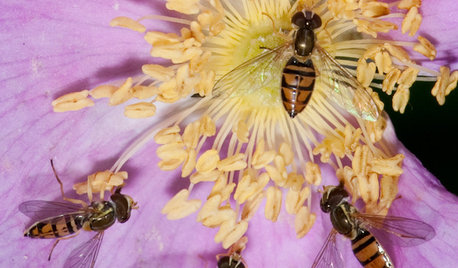
GARDENING GUIDESThis Fly Is One of the Most Beneficial Insects Around
Meet the syrphid fly, a colorful pollinator that also beats chemicals for controlling aphids and other garden pests
Full Story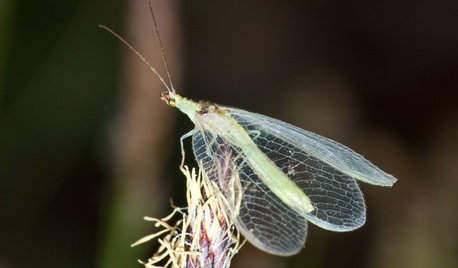
GARDENING GUIDESLook Out for Lacewings: Beneficial Insects Coming to a Garden Near You
Lacewings are delicate insects that produce alligator-like, hungry offspring that devour aphids and other garden pests
Full Story
GARDENING GUIDESOrganic Matters: Thwart Insect Pests With Trap Crops
Add a few sacrificial plants to your garden to lure insects away from the harvest
Full Story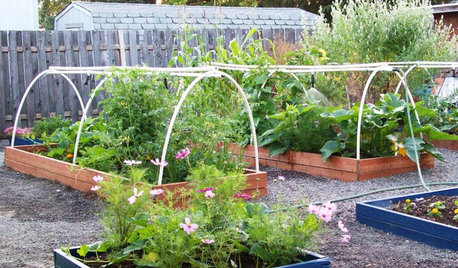
BENEFICIAL INSECTSAttract Pollinators for a Productive Edible Garden
You can lure bees, butterflies and birds into your yard with the right flowers and nesting spots
Full Story
GARDENING GUIDESAttract Hummingbirds and Bees With These Beautiful Summer Flowers
Roll out a welcome mat for pollinators to keep your landscape in balance and thriving
Full Story
GARDENING GUIDESGreat Design Plant: Rosa Banksiae a Low-Maintenance Beauty
This thornless, disease- and insect-resistant rose brings showers of white or yellow flowers to the spring garden
Full Story
GARDENING GUIDESInvite Mining Bees to Your Garden by Planting Their Favorite Plants
Look for mining bees (Andrena) pollinating woodland wildflowers in U.S. gardens this spring
Full Story
GARDENING GUIDESGreat Design Plant: Silphium Perfoliatum Pleases Wildlife
Cup plant provides structure, cover, food and water to help attract and sustain wildlife in the eastern North American garden
Full Story
EDIBLE GARDENSGarden BFFs? Why Your Vegetables Are Begging for Companion Plants
Foster friendships among plants for protection from pests, pollination support and color camaraderie
Full Story
WINTER GARDENINGPruning Secrets for Exquisite Roses
Encourage gorgeous blooms year after year with this time-tested advice on how to prune your rosebush in winter for health and shape
Full StorySponsored
Custom Craftsmanship & Construction Solutions in Franklin County



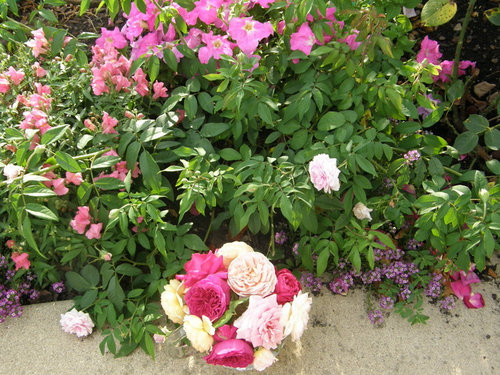
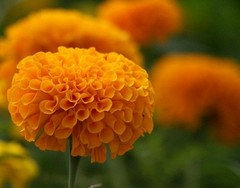
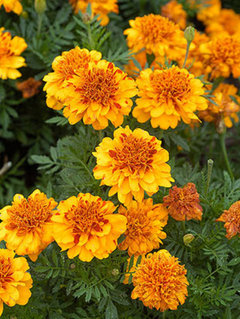

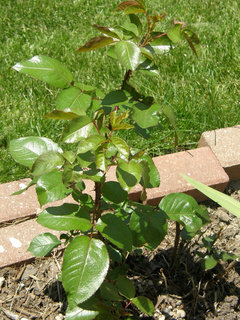
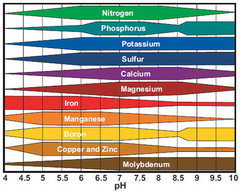
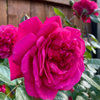
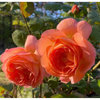
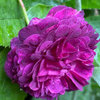
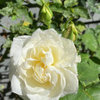
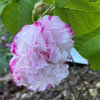
User